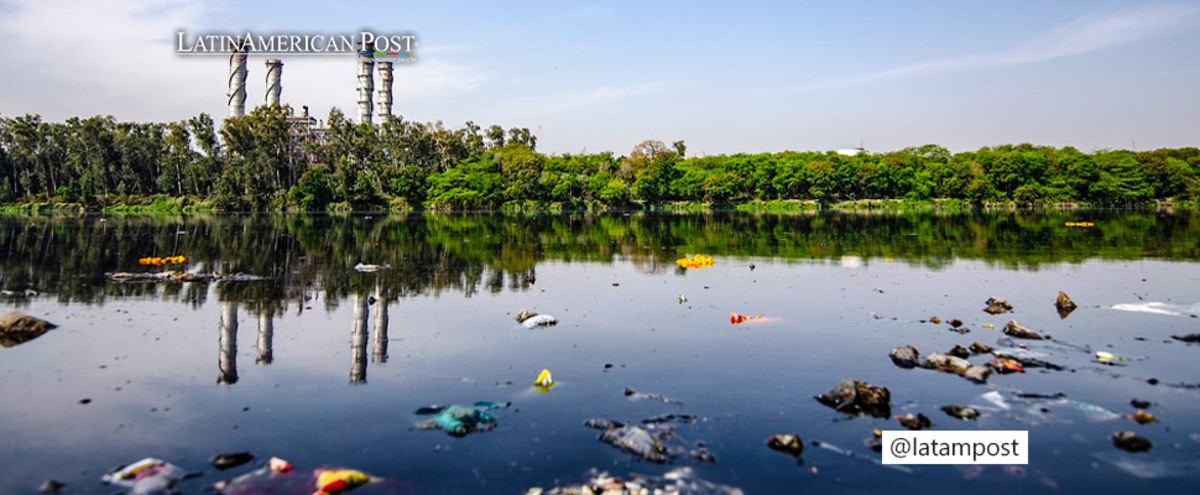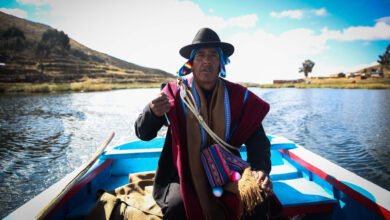What Kind of Pollution is Generated in Latin America if it is Not with Carbon Emissions?
While no country in Latin America is among the highest CO₂ emitters, another type of pollution causes concern.

Photo: Pixabay
LatinAmerican Post | María Fernanda Ramírez Ramos
Listen to this article
Leer en español: ¿Qué tipo de contaminación se genera en América Latina si no es con emisiones de carbono?
When you think of the most polluting countries in the world, the United States or China probably comes to mind. And this image is real, as they are the largest generators of CO₂ emissions. Along with them, there are India, Russia, Japan, Iran, Germany, Saudi Arabia, Indonesia, and South Korea, according to the Global Carbon Atlas. Although no Latin American countries are in the top 10 of this ranking, Brazil and Mexico occupy the 12th and 15th positions, respectively.
On the other hand, pollution from CO₂ emissions, although the major contributor to greenhouse gases and global warming, is not the only pollution harmful to life. Another of humanity's major problems is plastic pollution. Likewise, water sources are being polluted and depleted, and the land is being damaged by intensive agriculture. We will show you the panorama of pollution in Latin America.
Plastic Pollution in Latin America
The region faces significant challenges in terms of properly managing plastic waste and preventing its contamination of natural ecosystems. As in other parts of the world, many plastics in Latin America end up in landfills, rivers, seas, and ecosystems. This harms marine wildlife, water quality, and human health. According to research on plastic pollution published in Our World in Data, Brazil has the worst plastic waste management in the world, and Venezuela, Mexico, and Argentina also have serious problems.
Several factors contribute to plastic pollution in the region. These include inadequate waste management infrastructure, low recycling rates, environmental awareness, and insufficient regulation. However, it is essential to note that some Latin American countries have taken steps to address this problem. Chile, Colombia, Mexico, Argentina, and Brazil are creating laws banning single-use plastics.
Air Pollution
The primary sources of air pollution in Latin America are motor vehicles, industry, burning fossil fuels, and burning biomass for cooking and heating homes. This is a growing problem, especially in immense Latin American capitals. According to the Pan American Health Organization (PAHO), "more than 150 million people in Latin America live in cities that exceed WHO Air Quality Guidelines".
We recommend you read: The 5 Most Polluted Cities With the Worst Air Quality in Latin America
Water Pollution: Rivers are Being Poisoned
Water pollution is a severe problem in Latin America. The primary sources of water pollution include untreated sewage discharge, mining, and intensive agriculture, which often use pesticides and chemical fertilizers with detrimental effects on human and other living beings' health. Pollution of rivers and lakes is common in countries such as Brazil, Colombia, Mexico, Peru, and Argentina.
According to the United Nations Environment Program, Colombia is the third most mercury-polluting country in the world. Mercury is poisoning the rivers, the fish in them and what people eat contains this metal. This contamination is mainly due to mining and has devastating consequences for the health of the population.
Moreover, in most of Latin America, better wastewater treatment must be provided. A recent research published in Science Total Environment Journal confirms this: "In the poorest areas of emerging countries, such as some parts of Latin America, there are inadequate and precarious water treatments." It also states that this increases human exposure to toxic compounds.
Soil Contamination
Soil pollution in Latin America is mainly related to industrial activity, mining, and intensive agriculture. Contamination constitutes a vicious circle since soil contamination filters into aquatic bodies and vice versa. At the same time, microplastics reach the oceans and various ecosystems, threatening their equilibrium.
As for the soil, releasing toxic chemicals, such as heavy metals and pesticides, can contaminate the soil and affect food quality and human health. Mining in countries such as Peru and Chile generates significant soil contamination problems. Likewise, agriculture in Brazil or Argentina, with transgenic crops and pesticides, is damaging the land and encouraging deforestation.
Some countries have implemented regulations and measures to address these problems, but there is still much to be done to reduce pollution in the region. And although it is not an area with high carbon emissions, compared to North America or Europe, there are severe dangers in the contamination of rivers, air, and soil. Undoubtedly, extractivist processes are the main culprits, and we must focus on mining and exploiting the region's natural resources.




